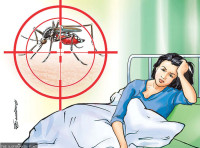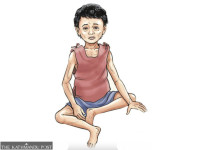Health
Nepal starts conducting mpox clade tests, ending need to send samples
The National Public Health Laboratory now handles mpox clade identification, ending the need to send specimens abroad.
Post Report
Nepal no longer has to send specimens of mpox-infected persons abroad for clade identification tests, as the National Public Health Laboratory has started conducting these tests in its own lab.
Previously, due to the lack of services in the country, the Ministry of Health and Population had to send specimens to the World Health Organisation’s collaborating centre in India or other countries including China (Hong Kong), Thailand, and the UK.
Recently, the Health Ministry sent specimens from two mpox-infected persons to the WHO collaborating centre in Thailand for clade identification tests.
“We have started conducting clade identification tests in our own laboratory,” said Dr Ranjan Raj Bhatta, director of the laboratory. “The results of the tests exactly matched those from the WHO collaborating centre in Thailand.”
According to Dr Bhatta, the laboratory’s report also confirmed that both migrant workers—a 36-year-old man from Tanahun and a 44-year-old man from Sindhuli, both returning from Saudi Arabia—were infected by the Clade IIb strain of the virus. The WHO’s collaborating centre provided a similar report.
A clade is a subtype, genotype or group of viruses that originate from a common ancestor.
So far, three clades of mpox viruses—clade I, clade IIa and clade IIb—have been identified.
Experts say clade I, which is present in the Congo basin, causes up to 10 percent human mortality and is transmitted mainly by rodents, although human-to-human transmission has also been recorded. Clade IIa, which is found in West Africa, has a low mortality rate, while clade IIb is currently spreading globally through human transmission. Clade IIb was responsible for infection in the first mpox case recorded in Nepal. The country recorded its first case of mpox infection in June 2023, when a 60-year-old foreign national tested positive.
Officials say clade identification was needed as it determines the virus’s virulence and transmissibility, which are necessary to curb the spread of the disease.
Meanwhile, health officials say that both infected persons have fully recovered and were discharged from the hospital.
Mpox is a rare disease caused by an infection with the mpox virus. The disease has been a neglected public health problem in parts of Africa for decades. The disease came to widespread attention in May 2022, when countries outside Africa began reporting new cases.
Since then, mpox has spread globally. More than 100,000 people from 122 countries have already tested positive for the disease.
In the third and fourth weeks of December, Nepal confirmed its second and third cases of mpox infection.
Health authorities say they have stepped up surveillance measures to prevent a possible outbreak of the viral disease. Along with stepping up screening of passengers entering the country via the Tribhuvan International Airport, health authorities have asked dermatologists throughout the country to refer suspected cases for testing.
Public health experts warn that screening suspects at health desks in international airports and land crossings is not sufficient to prevent outbreaks, as the first symptoms of mpox can take between five and 21 days for the first symptoms of mpox to appear, and not all cases can be detected during screening.
Although mpox is typically mild and most people recover within weeks, experts caution that its risks should not be underestimated. They stress the need for taking precautions, saying that any disease seen in any corner of the world can reach Nepal due to the high mobility of people.
Its symptoms include fever, headache, swelling, body aches, exhaustion, and itchy rashes on the face, hands, and feet.
As the disease primarily spreads through close person-to-person contact, public health experts recommend self-isolation and good hygiene to prevent transmission.




 7.12°C Kathmandu
7.12°C Kathmandu













